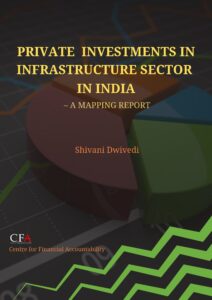 Infrastructure continues to be a focus sector in the Indian economy and is seen as a catalyst to boost overall economic growth. It continues to attract attention not only from the government for creating suitable policies and programs but also from the International Financial Institutions (IFIs) and private investors. Infrastructure sector includes power generation and transmission, highways, ports, bridges, dams, industrial zones, railway freight corridors, inland waterways, mega solar parks, port modernisation and urban infrastructure development, which includes smart cities, metro rail projects, housing, water supply and sanitation, and solid waste management.
Infrastructure continues to be a focus sector in the Indian economy and is seen as a catalyst to boost overall economic growth. It continues to attract attention not only from the government for creating suitable policies and programs but also from the International Financial Institutions (IFIs) and private investors. Infrastructure sector includes power generation and transmission, highways, ports, bridges, dams, industrial zones, railway freight corridors, inland waterways, mega solar parks, port modernisation and urban infrastructure development, which includes smart cities, metro rail projects, housing, water supply and sanitation, and solid waste management.
Several national and international agencies have been releasing regular estimates of the investments required for infrastructure development in India. For instance, as per the estimates by Economic Survey for 2017-18, the country would need around USD 4.5 trillion for its infrastructure by 2040. Global Infrastructure Outlook observes that cumulative figure for India’s infrastructure investment gap would be around USD 526 billion by 2040. The International Finance Corporation (IFC), climate-smart investment opportunities in infrastructure sectors estimates that between 2018 to 2030 India needs USD 2.2 trillion. ADB estimated that the cost to address India’s infrastructure deficit is around USD 230 billion per year, which when climate-adjusted, would grow to USD 261 billion between 2016-20.
In the financial year 2018–19, the Government of India announcements promised to provide a boost to the sector by allocating Rs 5.97 lakh crore (USD 92.22 billion) for the sector. In the financial year 2019–20, two similar announcements were made – the Government of India continued to push the infrastructure sector by allocating Rs 4.56 lakh crore (USD 63.20 billion) for the sector. In FY 2020-21 budget proposal, capital expenditure is proposed at Rs 5.54 lakh crore (USD 72.59 billion). This included allocations to railways, household level electrification scheme, green energy corridor, telecom infrastructure, metro rail systems, and highway projects among others.
In December 2019, the government announced the implementation of infrastructure projects under the National Infrastructure Pipeline (NIP) across the country. Major sectors include – transport, water and sanitation, social infrastructure, commercial infrastructure, energy, logistics, real estate, tourism, and information technology. The total number of projects in the infrastructure sector are 11,174, of which the National Infrastructure Pipeline (NIP) projects are 6,749. Out of these Engineering, Procurement and Construction (EPC) are 6,679; Public Private Partnership (PPPs) are 1,122; and Hybrid Annuity Model (HAM) are 546 projects. The total investment estimated under NIP is amounting to Rs 111 lakh crore (USD 1.45 trillion). The share of the union government and the states in the projects would be 39 percent and 40 percent respectively, while the private sector would contribute 21 percent.
The general reforms that have been recommended under NIP are improving project preparation processes, enhancing execution capacity of private sector participants, robust enabling environment, institutionalisation and efficiency of dispute resolution, improving capacity development of project execution agencies, and strengthening infrastructure quality.
NIP has also recommended financial sector reforms like revitalising the bond and credit markets, strengthening the municipal bond market in India, revitalising asset monetisation, enabling user charges to finance infrastructure as well as overall transformations of the long-term financing landscape.
The government plans to focus on NIP over the next four years as a part of its ongoing emphasis on infrastructure projects. There is indication that a large chunk of funding for these projects will come from the public sector, and the formation of a new Development Financial Institution (DFI) and the National Asset Monetisation (NMP) plan of the government are major steps in this direction. It also seeks to revitalise PPPs by strengthening PPP institutions, promoting improved contractual modalities, pursuing fair allocation of risks and strengthening progress monitoring.
Further, there have been increased efforts by the government to attract private sector players to invest in the infrastructure sector in previous years under various schemes like the Viability Gap Funding (VGF) scheme. The private sector financing has been given a high priority to build infrastructure in the country. This report is an attempt to capture the efforts put in this direction and the resultant trends in private investments in India in various sub-sectors within the infrastructure sector. It strives to put together data from the past few years to empirically analyse private investments in India sectorally, company wise, fund wise, year-on-year as well as based on the originating country. This report makes an effort to put together data related to private investments available in the public domain to understand the trends and developments in the past few years in the private investment space for the common person, though the availability of such data is relatively limited. It also probes the policies that have been formulated in this period to promote private investments in the country.
Read the full report here:Private Investments final report_Dec 2021
Centre for Financial Accountability is now on Telegram. Click here to join our Telegram channel and stay tuned to the latest updates and insights on the economy and finance.
